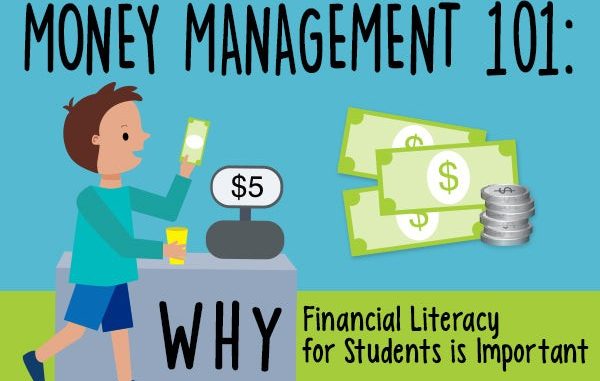
Financial literacy is no longer a luxury—it’s a necessity, especially for students preparing to enter a world where economic decisions shape nearly every aspect of adult life. From managing student loans and budgeting for daily expenses to understanding credit scores and investment options, the ability to navigate financial systems is critical. Yet, despite its importance, financial literacy often remains underemphasized in traditional education. This gap leaves many young adults ill-equipped to make informed choices, exposing them to risks that can have long-term consequences. In business terms, it’s akin to launching a startup without a clear understanding of cash flow or market dynamics—ambition without strategy.
The foundation of financial literacy begins with understanding money as a tool rather than a mystery. For students, this means learning how to budget, save, and spend wisely. These skills may seem basic, but they form the bedrock of financial stability. Consider a university student managing a part-time job while covering tuition and living expenses. Without a clear budget, it’s easy to overspend on nonessentials and fall short when bills are due. With even a modest grasp of financial planning, that same student can allocate resources more effectively, reduce stress, and build habits that support long-term goals. This kind of discipline mirrors the financial stewardship required in business, where every dollar must be accounted for and aligned with strategic priorities.
Credit is another area where financial literacy plays a pivotal role. Students often encounter credit for the first time through student loans or credit cards, yet few understand how credit scores are calculated or why they matter. A poor credit score can limit access to housing, employment, and future borrowing, while a strong score opens doors to opportunity. Teaching students how to build and maintain good credit—through timely payments, responsible borrowing, and monitoring reports—empowers them to take control of their financial futures. In business, creditworthiness affects everything from vendor relationships to capital access. The same principles apply on a personal level, reinforcing the idea that financial literacy is not just academic—it’s operational.
Investing is another dimension that deserves attention. While it may seem premature to discuss stocks, bonds, or retirement accounts with students, early exposure can demystify these concepts and encourage long-term thinking. Compound interest, for example, is a powerful force that rewards early and consistent investment. A student who begins contributing to a retirement fund in their twenties—even modestly—can accumulate significantly more wealth than someone who starts a decade later. This principle is central to business finance as well, where early investments in innovation or infrastructure can yield exponential returns. By understanding how money grows over time, students learn to think strategically and plan for the future.
Financial literacy also intersects with broader economic awareness. Students who understand inflation, interest rates, and market trends are better equipped to interpret news, evaluate policies, and make informed decisions. This kind of literacy fosters civic engagement and critical thinking, qualities that are essential in both business and leadership. For instance, understanding how monetary policy affects loan rates can influence decisions about borrowing or expansion. On a personal level, it can guide choices about when to refinance debt or make large purchases. The ability to connect macroeconomic trends with individual circumstances is a hallmark of financial maturity.
Technology has made financial literacy more accessible, but it also introduces new complexities. Digital banking, mobile payment apps, and cryptocurrency platforms offer convenience, but they require users to understand security, privacy, and volatility. Students must learn to navigate these tools responsibly, recognizing both their benefits and risks. In business, digital finance is reshaping how transactions are conducted, how data is analyzed, and how value is created. The same transformation is happening in personal finance, and students who understand these shifts are better positioned to thrive in a digital economy.
Education systems and institutions have a role to play in embedding financial literacy into curricula. This doesn’t mean adding a single course—it means integrating financial concepts across subjects and grade levels. Math classes can explore budgeting and interest calculations, economics courses can examine market behavior, and even humanities programs can discuss the ethical dimensions of wealth and poverty. In business education, financial literacy should be a core competency, not an elective. Students preparing for careers in management, entrepreneurship, or consulting must be fluent in financial language and capable of interpreting financial data. These skills are not just technical—they’re strategic.
Ultimately, the importance of financial literacy for students lies in its power to foster independence, resilience, and informed decision-making. It equips young adults to navigate the complexities of modern life with confidence and clarity. In business, financial literacy is the difference between reactive management and proactive leadership. On a personal level, it’s the difference between surviving and thriving. When students understand how money works, they gain more than knowledge—they gain agency. They learn to set goals, evaluate options, and take control of their futures. And in doing so, they lay the groundwork for a life of purpose, stability, and growth.